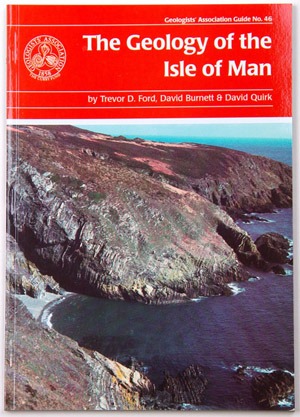The Geology of the Isle of Man (2nd edition)
Geologists’ Association Guide No 46
By Trevor D Ford, David Burnett and David Quirk

The aim of the guide is to help professional and interested amateur geologists to investigate the rocks themselves and to put them in a modern scientific context.
About two thirds of the Isle of Man is composed over the sedimentary Manx Group of early Ordovician age, which is informally known as the Manx “Slate”. There are also many metamorphosed sandstone formations and small intrusions and numerous dykes. The older strata were folded and faulted during the Caledonian and Acadian orogenies.
The bedrock is overlain by a range of glacial and post-glacial deposits. Igneous intrusions in the form of dykes and plutons are common, some associated with mineralisation which gave rise to a minor metal mining industry.
The guide is set out in two parts. The first provides an overview of this geology and explains how this developed over geological time. The second describes excursions to specific locations with a wide variety of geological features, mostly easily accessible on the foreshore.
These locations consist of:
- Lower Palaeozoic – Manx and Dalby Groups.
- Granites and mines.
- Peel Group.
- Carboniferous Limestone.
- Scarlett volcanics.
- Tertiary Dykes.
- Quaternary of the northwest coast.
- Quaternary of the northeast coast.
The black and white photographs are actually of a very fine quality, as are the maps of the separate locations and generally of the island.
As always in GA guides, these are all great areas to visit on holiday, so I recommend taking this book with you if you are going to be nearby. This guide can be bought at the Geologists’ Association website.
The Geology of the Isle of Man, Guide No 46 (2nd edition), by Trevor D Ford, David Burnett and David Quirk Cope, The Geologists’ Association, London (2001), 92 pages (paperback), ISBN: 9780900717796